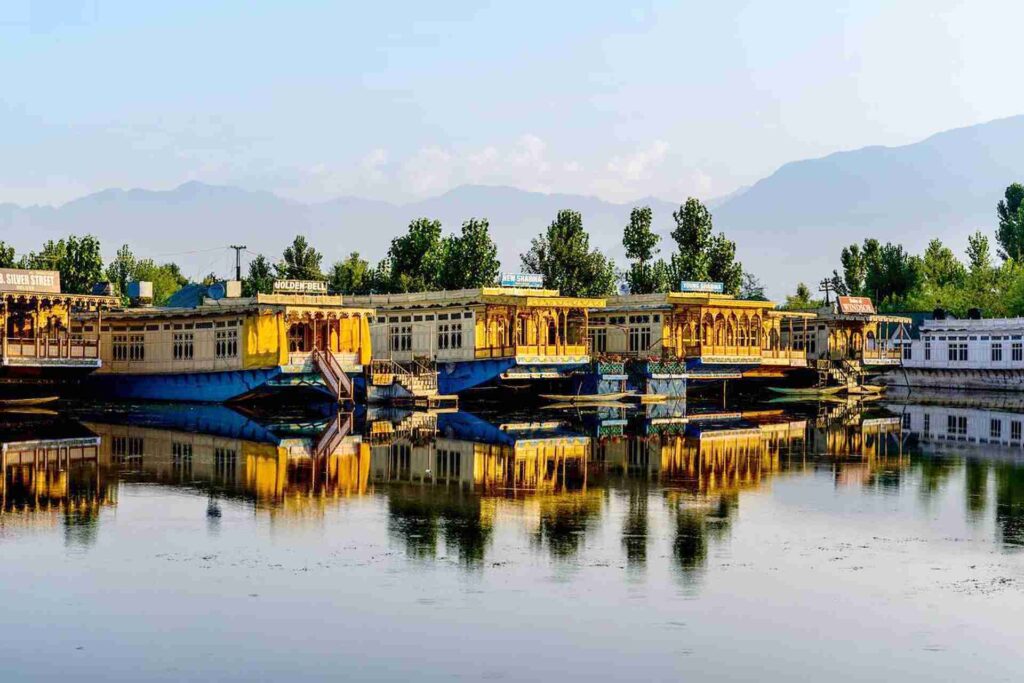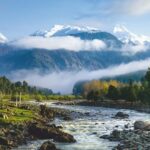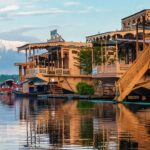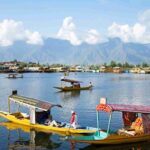

Your Next Honeymoon Destination Awaits
About
Nestled in the Ladakh region, Zanskar Valley is a rugged haven for unconventional adventurers. Its breathtaking landscape boasts the majestic Zanskar Range, adorned with picturesque rivers and lakes. Whether accessed from Leh or Srinagar, the journey to this valley is a scenic drive through towering mountains. This idyllic destination has long been renowned among mountaineers, trekkers, and seekers of peaceful travel experiences.
One of the remarkable aspects of this remote location is its numerous ancient monasteries. These structures can be found throughout the area, from bustling marketplaces to the rugged cliffs of the mountains. These monasteries serve as a refuge for monks who have devoted themselves to years of meditation, secluded from the distractions of modern society and immersed in peaceful contemplation. A fulfilling part of visiting Zanskar is discovering these spiritual havens, as well as encountering the stark beauty of the surrounding barren mountains.
Discover the wonders of Zanskar Valley with our tour package. Immerse yourself in the rich culture and history of this remote region through a variety of activities, such as short hikes and visits to ancient Buddhist monasteries. Our comprehensive package includes transportation, hotel bookings, and a knowledgeable guide for all aspects of your journey.
Let’s delve into the Zanskar Valley Trip and its prominent highlights, giving you an idea of the experience it offers. Keep reading for a glimpse into the stunning beauty of Zanskar!
Popular Places in Zanskar Valley
Zanskar Valley, a hidden gem with breathtaking landscapes, ancient monasteries, and a rich culture, offers numerous must-visit places:
Padum: The heart of Zanskar, Padum, serves as the administrative and commercial hub. Surrounded by stunning views, its old town boasts traditional houses and monasteries, making it the primary location for accommodation in the valley.
Karsha Monastery: A key religious and cultural site, Karsha Monastery sits amidst majestic mountain vistas, known for its significant historical and spiritual value.
Zangla: The serene village of Zangla, home to the historic Zangla Palace, offers a peek into the region’s past amidst picturesque mountain landscapes.
Stongdey Monastery: Perched on a hill, Stongdey Monastery is a site of spiritual serenity and architectural beauty, offering panoramic views of the Zanskar Valley.
Phuktal Monastery: An architectural marvel, Phuktal Monastery is carved into cliff faces, accessible only by trek, and stands as a testament to monastic isolation and tranquility.
Sani Monastery: Known for its vibrant “Tsechu” festival, Sani Monastery is among Zanskar’s oldest, housing ancient murals and artifacts.
Zongkhul Monastery: Nestled in a cave, Zongkhul Monastery fascinates with its exquisite frescoes and a meditation cave associated with the Buddhist scholar Naropa.
Suru Valley: A stone’s throw from Zanskar, Suru Valley dazzles with its verdant meadows, traditional villages, and the breathtaking Drang Drung Glacier, part of an ancient travel route.
These spots in Zanskar Valley promise a blend of adventure, spirituality, and natural beauty, making it a bucket-list destination for travelers seeking tranquility and cultural immersion.

Things to Do in Zanskar Valley
Discover the best of Zanskar with our curated list of must-see attractions, perfect for planning your journey.
Trekking: Known for the iconic Chadar Trek, Zanskar offers a thrilling experience for trekkers in winter, with the lake’s surface frozen solid. Summer isn’t left behind, offering a variety of treks from day hikes to longer expeditions like Padum Darcha and Zanskar-Sham Valley.
Bike Rides: Navigate the rugged terrains of Zanskar Valley on a bike, an adventure that promises an adrenaline rush. This journey reveals inaccessible parts of Zanskar, linking it to major destinations like Leh, Srinagar, and Manali.
Baralachha Pass: Experience the stunning landscape and breathtaking views of Zanskar and Pir Panjal mountains while traversing the Baralachha Pass.
Sangam Point: A visit to Sangam Point offers a mesmerizing sight where the Indus and Zanskar rivers converge, showcasing a blend of natural beauty.
Festivals and Culture: Beyond its natural splendor, Zanskar’s vibrant festivals and rich cultural tapestry, drawing from Tibetan, North Indian, and Chinese influences, offer a glimpse into the valley’s soul.
Monasteries: Exploring Zanskar’s monasteries, like Likir, Alchi, and Thiksey, offers insight into Buddhist culture, with their serene monks, stunning Buddha statues, and intricate artwork.
Local Cuisine: No visit is complete without sampling Zanskar’s culinary delights, from Thukpa and Momos to local beverages like Kahwah, ensuring a taste of the region’s flavors amidst its breathtaking scenery.
This guide highlights Zanskar Valley’s unparalleled attractions, promising an unforgettable adventure in nature’s lap.
Where to Stay at Zanskar Valley
Zanskar Valley, a less-traveled destination, requires early planning for accommodations. Padum, the valley’s main hub, offers a range of lodging options, from three-star hotels to camp stays, catering to various budgets.
Additionally, government-run guesthouses are available in locations such as Sankoo, Panikhar, Parkachik, and Rangdum, providing basic and affordable lodging. In Karsha, besides private guesthouses, monasteries offer unique stay experiences, allowing visitors to immerse in the local culture. Homestays, giving a glimpse into the lifestyle of Zanskar’s residents, are widespread across the region, including Reru and Hanumil.
Travelers to Zanskar should pack essentials like warm clothing, water, snacks, cash (as ATMs are scarce), fuel for vehicles, hygiene products, a basic first aid kit, a flashlight, and a suitable SIM card for better connectivity to ensure a smooth experience. For those planning a trek or tour in Zanskar Valley, consulting with travel planners for a comprehensive list of necessities is advisable. Our travel packages to Zanskar include accommodations, simplifying your travel preparations.

Best Time to Visit
The ideal time to explore Zanskar Valley is between June and September. These months offer warm weather and accessible routes, making them perfect for visiting. Let’s break down what you can expect in Zanskar Valley across different seasons.
Winter (December to March) sees Zanskar covered in snow, with temperatures dropping significantly. Travel can be challenging due to heavy snowfall and freezing temperatures, which is why sightseeing isn’t recommended during this time. Yet, for those looking for an adventure, the idea of walking on a frozen lake can be enticing. Just remember, it gets really cold, with temperatures fluctuating between -2°C and -25°C. Traveling to Zanskar and Ladakh in winter comes with its set of challenges, and we suggest it’s best left to those who are experienced and well-prepared.
Summer (June to September) brings warmer days with temperatures ranging from 15 to 30 degrees Celsius. While it starts getting warmer in March, snow doesn’t fully clear from roads and valleys until June. Summer in Zanskar is vibrant and filled with opportunities for adventure, provided you have the right guidance and support from travel professionals.
Autumn (October and November) transforms the valley into a colorful landscape, making it a beautiful time to visit. Although the temperature begins to drop, the days are sunny, and the nights are cool.
During the Monsoon season, Zanskar, like the rest of Ladakh, sees minimal rainfall due to its geographical location. Temperatures stay between 10 to 25 degrees Celsius, making it another great period for exploring the valley.
For a memorable journey to Zanskar Valley, the monsoon season comes highly recommended, thanks to its moderate climate and unique experiences awaiting visitors.



















